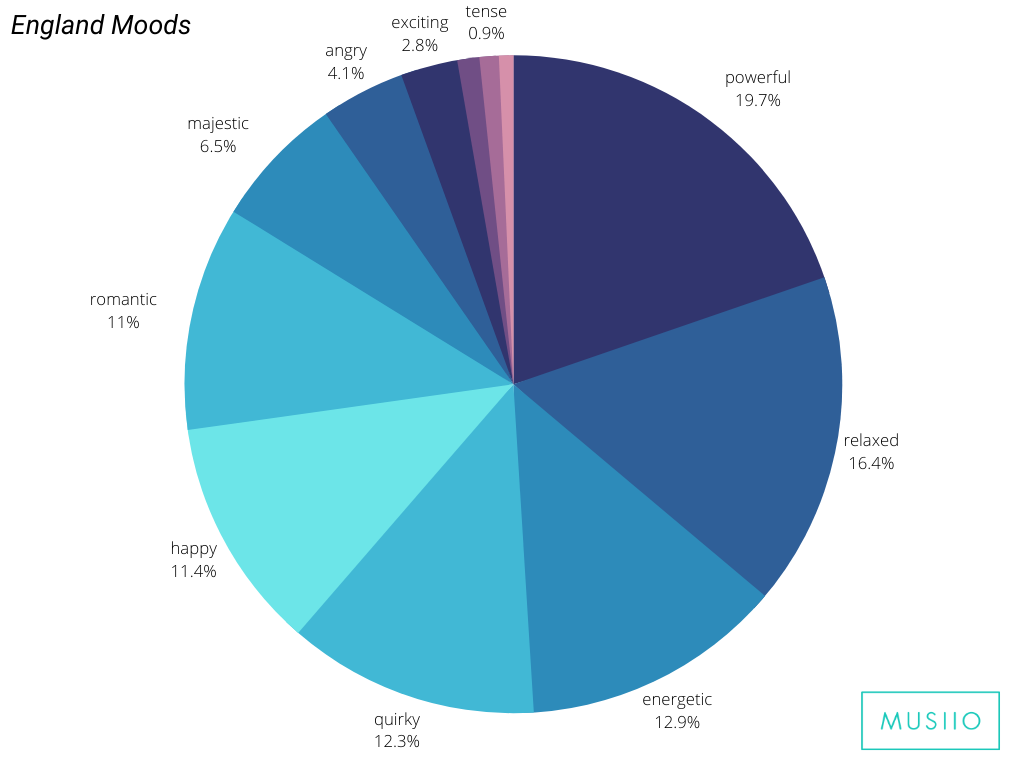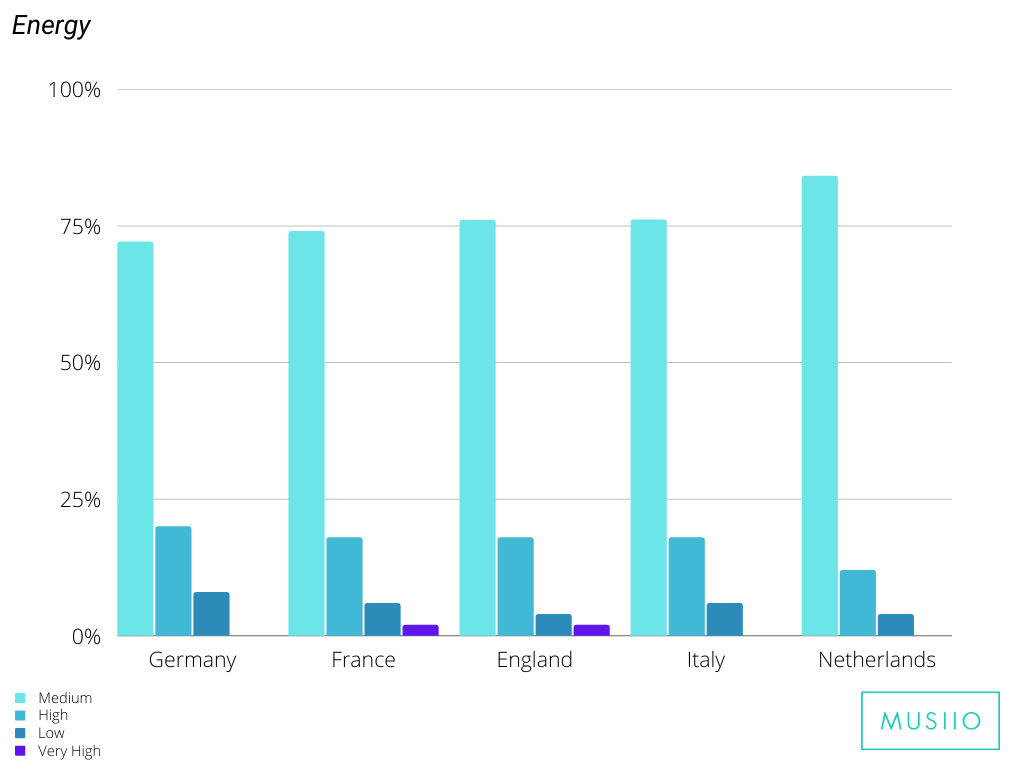According to data from the International Federation of the Phonographic Industry (IFPI) Global Music Report 2018, Germany, France, England, Italy, and Netherlands, lead the European recorded music industry. Together, these markets were worth over USD $4 billion in 2017.
To find out what makes these markets tick, we used our AI to tag the top 50 Spotify viral hits from each country.
Our calculation of scores took into account our AI’s confidence scores for each tag. For example, if a song had a 100% confidence score for Pop, it was treated as “more Pop” than a song tagged with Pop, but with a lower score. Similar calculations were also applied for Mood, Mood Valence, Vocal Gender, Key, and Tempo.





The top performing Genres were Hip Hop, Pop, Trap, and Folk.

Hip Hop comes out on top for each of the five markets, but France exhibits a particularly strong preference for the genre with a 4-7% stronger presence than in any other market. France’s second and fourth most heavily present genres, UK Grime and Trap, are also genres rooted in hip hop. This doesn't come as a complete surprise, however, as France is known to be the second-largest Hip Hop market in the world after the United States, with Hip Hop sales in Paris totaling over 2.6 million units in 2019, more than any other city in the world.

Another notable observation is the presence of Electronic music in the top 5 genres for Germany and the UK but not in any other markets. Berlin has long been referred to as the nightclub capital of the world, with club tourism bringing in a whopping €1.48 billion in 2017. In the UK, nighttime industries (including nightclubs) account for up to 8% of UK employment, with an annual revenue of £66 billion. The prevalence of electronic music in Germany and the UK could suggest that, while the club scene may be currently dormant, the love for Electronic music is most certainly still there.
Interesting Fact: Though not one of the first few genres that come to mind when it comes to viral music, Folk appears in the top 5 genres in the UK, Italy, and Netherlands.





Across the five markets, the moods with the largest presence were “quirky”, “powerful”, “energetic”, “romantic”, and “relaxed”.
France’s viral hits had the lowest “romantic” presence of the five countries, at less than 10%. This came as a surprise considering the reputation of French as being one of the world’s most romantic languages. Instead, the dominating moods in France were “powerful” and “quirky”. Together, they made up more than 50% of all detected moods.

Mood valence was overwhelmingly positive across all five markets, with more than half of each market’s songs being tagged with positive mood valence.

All 5 markets showed an overwhelming preference for male vocals.

In all five markets, more tracks were tagged with minor keys than major keys. When contrasted with the largely positive mood valence observed in all 5 markets, this casts some doubt on the common musical assumption that major music sounds happy and minor music sounds sad.

Most tracks in all five markets were tagged with medium energy. Music with very high energy was extremely rare and low was non-existent.

At least 85% of the tracks in all five markets featured vocals.

We grouped tempos into 4 buckets of BPM ranges: low (<60 BPM), medium (90-129 BPM), high (130-159 BPM), very high (>160 BPM). The observable trend and resulting graph is nearly identical to that of energy, with most tracks falling into the medium tempo bucket.
When we consider how dynamic virality in music can be, tools like musical analysis using AI become invaluable in ensuring that we remain up to date with trends in a data-driven manner. To learn more about our technology, contact us at info@musiio.com







